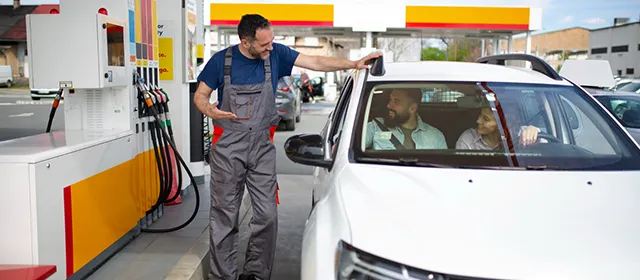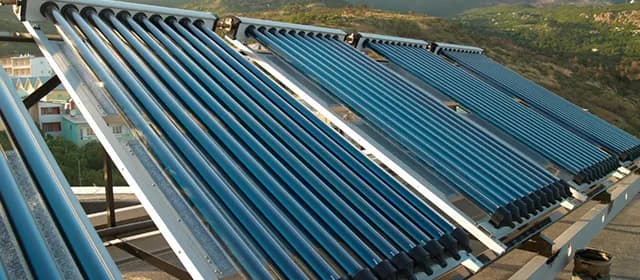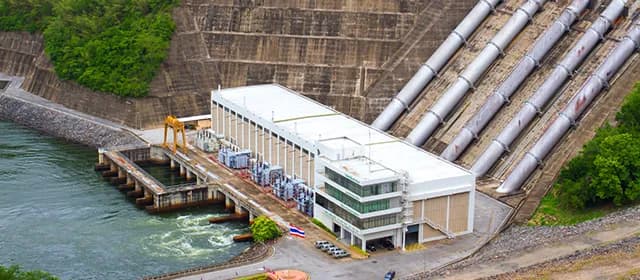Mobility powered by oil fuels (petrol, diesel, and other fossil derivatives) has long fueled economic development and personal transport systems. Growing environmental stress, climate imperatives, and public health concerns have spurred regulators across the globe to enforce stringent emission standards. These regulations alter vehicle design, fuel formulation, infrastructure investment, and consumer adoption dynamics. This blog examines regulatory frameworks, technical impacts on oil-fuel mobility, market adaptation, and future trajectories shaped by regulation.
Kings Research estimates that the global oil fuel mobility market size is projected to grow from USD 1.7 billion in 2024 to USD 3.6 billion by 2031, exhibiting a CAGR of 11.41% over the forecast period.
Regulatory Frameworks and Emission Standards
United States: Tier, GHG, and Mobile Source Emission Rules:
The United States Environmental Protection Agency (EPA) regulates emissions from mobile sources via pollutant-specific limits. Those include limits on carbon monoxide, nitrogen oxides, hydrocarbons, particulate matter, and others. The federal standards are grouped by vehicle class (light-duty, heavy-duty, nonroad). The regulation includes both exhaust and evaporative emissions limits, as well as fuel quality standards such as sulfur content. Vehicle manufacturers must secure certificates and allow in-use compliance testing; EPA inspects emissions performance of production and on-road vehicles. (Source: www.epa.gov)
The MOVES model developed by EPA simulates emissions from mobile sources over time, producing inventories of pollutants and greenhouse gases. This model supports regulatory analysis, planning, and compliance enforcement.
India: Bharat Stage Emission Norms and Leapfrogging to BS VI:
Indian mobility regulation follows Bharat Stage (BS) emission norms promulgated by the Central Pollution Control Board under Ministry oversight. These norms align to some extent with European standards. India advanced directly from BS IV to BS VI for new vehicles starting 1 April 2020, eliminating an intermediate BS V stage. BS VI norms introduce stricter mass emissions limits, real-driving emissions testing, and onboard diagnostics for a broad vehicle class spectrum. Type-approval certification under BS VI began earlier; India’s first BS VI certificate in two-wheeler segment was issued by ICAT.
Cummins Group in India achieved compliance certification for its BS VI OBD II engines via Automotive Research Association of India (ARAI) testing. Indian policymakers announced a draft of Bharat Stage VII norms for probable introduction in 2025. Nonroad diesel equipment is covered under India’s Stage IV and V nonroad emission standards, aligned with European equivalents.
Effects on Oil-Fuel Mobility
- Fuel Composition and Quality Requirements:Emission regulations compel changes in fuel quality. For example, ultra-low sulfur levels in diesel and petrol are prerequisites to ensure compatibility with particulate filters, catalytic converters, and other emission control hardware. In jurisdictions like the U.S., fuel sulfur standards are integral to emission rules. In India, BS VI implementation required simultaneous upgrade of fuel infrastructure to supply low-sulfur fuels at scale. Fuel reformulation adds cost to fuel production and supply logistics. Oil companies and refiners must adapt processes (Hydrodesulfurization, blending) to meet regulated limits, shifting investment toward cleaner refining technologies.
- Vehicle Design, Emission Control Systems, and Cost: Auto manufacturers respond to tighter standards by adopting advanced emission control technologies. Diesel particulate filters, selective catalytic reduction, exhaust gas recirculation, and improved combustion calibration become essential. Real-world emissions testing and onboard diagnostics require hardware redundancy and tougher durability metrics. Compliance with emission standards increases manufacturing costs, which may translate into higher vehicle pricing. The engineering complexity rises to balance performance, fuel efficiency, and emissions tradeoffs.
- Consumer Behavior and Fuel Demand: Stricter standards can increase the ownership cost of internal combustion engine vehicles. Consumers may favor electric vehicles or alternative-fuel options as total cost of ownership tilts in their favor. Oil demand may plateau or decline in certain mobility segments. Demand for renewable fuels or synthetic fuels may increase to reconcile mobility needs and regulatory compliance.
- Infrastructure and Compliance Enforcement: Governments require emissions inspection and maintenance (I/M) programs to monitor in-use vehicles. EPA guidance supports modeling and performance standard approaches for I/M programs, incorporating the MOVES5 model. Enforcement infrastructure, roadside checks, remote sensing, and certification of emission laboratories become integral. The cost of compliance enforcement and emissions monitoring lies with regulators and sometimes with industry partners.
Market Adaptation: Technology, Strategy, and Competition
Major mobility and engine firms announce innovation in response to emission regulation. Cummins India’s successful BS VI OBD II certification demonstrates strategic adaptation in engine portfolio. In contrast, some automakers explore hybrid systems, plug-in electrification, or hydrogen powertrains to avoid future regulatory constraints.
Oil and fuel companies invest in renewable fuel technologies, such as biodiesel, hydrogen, or synthetic e-fuels, to offer compliant alternatives. Some enter partnerships with mobility firms to co-develop low-carbon fuels. Regulatory impetus ensures that such investments carry strategic significance.
Auto OEMs and regulators often engage in phased standard rollouts to allow industry adjustment. In many markets, compliance lead times and allowances for fleet averaging provide flexibility. However, the tightening schedule compresses development cycles and underscores competitive pressures. Manufacturers failing compliance face penalties, restricted sales, or reputation risk.
Challenges and Trade-offs
Emission regulation enforcement across large vehicle fleets grows complex, particularly in emerging markets. In jurisdictions with weak inspection regimes, noncompliant vehicles may evade oversight, reducing regulatory effectiveness. Differences in national fuel and grid infrastructure magnify the variance in achievable emission reductions. The cost burden of compliance may disproportionately affect low-income segments and small manufacturers. Balancing mobility access, cost, and environmental goals requires careful policy design.
Stringent standards push technology boundaries. In real-driving conditions, emissions may diverge from laboratory estimates unless conformity factors and durability controls are robust. Calibration between performance, fuel economy, and emissions tradeoffs becomes intense. Large capital investments in production retooling and emission control components stress industry margins.
Transitioning mobility systems toward low-carbon alternatives requires coherent regulation across fuels, vehicles, infrastructure, and end-use behavior. Regulatory misalignment or lags may create compliance gaps. Market participants may delay innovation if regulatory signals are ambiguous or subject to rollback.
Quantitative Impacts and Emission Reduction Trends
Transportation accounted for 28 percent of U.S. greenhouse gas emissions in 2022. That share emerges as a primary target in regulatory strategy. In mobile source inventories, emission modeling projects reductions in nitrogen oxides from transportation exceeding 50 percent between 2011 and 2025, largely attributable to stricter emission standards and fleet turnover.
Regulatory tightening reduces pollutant emissions; for example, mobile source particulate matter and NOₓ decline under newer vehicle rules. The decrease in conventional pollutants often precedes or enables carbon intensity reductions. Emission models such as MOVES5 provide spatially resolved forecasts of pollutant reductions under scenario assumptions.
Outlook and Regulatory Trajectories
Emerging policies include zero-emission mandates or sales bans for internal combustion vehicles. In the U.S., California obtained a waiver under the Clean Air Act to ban new gasoline car sales by 2035, though that rule faces legal challenges and potential reversal. In India, the draft BS VII norms plan to introduce even stricter emission thresholds in early 2025, pressuring stakeholders to future-proof designs.
Regulators are increasingly integrating lifecycle emissions, well-to-wheel assessments, and carbon intensity limits alongside tailpipe standards. Policymakers may adopt integrated policies combining vehicle standards, carbon pricing, renewable fuel quotas, and infrastructure incentives. Data modeling, remote sensing, and digital compliance systems will become central to enforcement.
Vehicle manufacturers may shift from incremental improvements to paradigm transitions, electric, fuel cell, or synthetic fuel platforms. Oil and fuel companies face choice between adaptation and obsolescence. Regulators wield power to reshape mobility through phased standards, but must recon with equity impacts and infrastructure readiness.
Conclusion
Regulations and emission standards exert transformative influence on oil-fuel mobility. Fuel quality mandates, hardware compliance, fleet turnover, and enforcement architecture recalibrate the industry landscape. Markets respond via technological innovation, strategic investment, and shifts in consumer adoption. Coherent regulatory progression and robust compliance mechanisms will determine whether mobility transitions toward lower carbon futures while preserving access, affordability, and systemic resilience.




